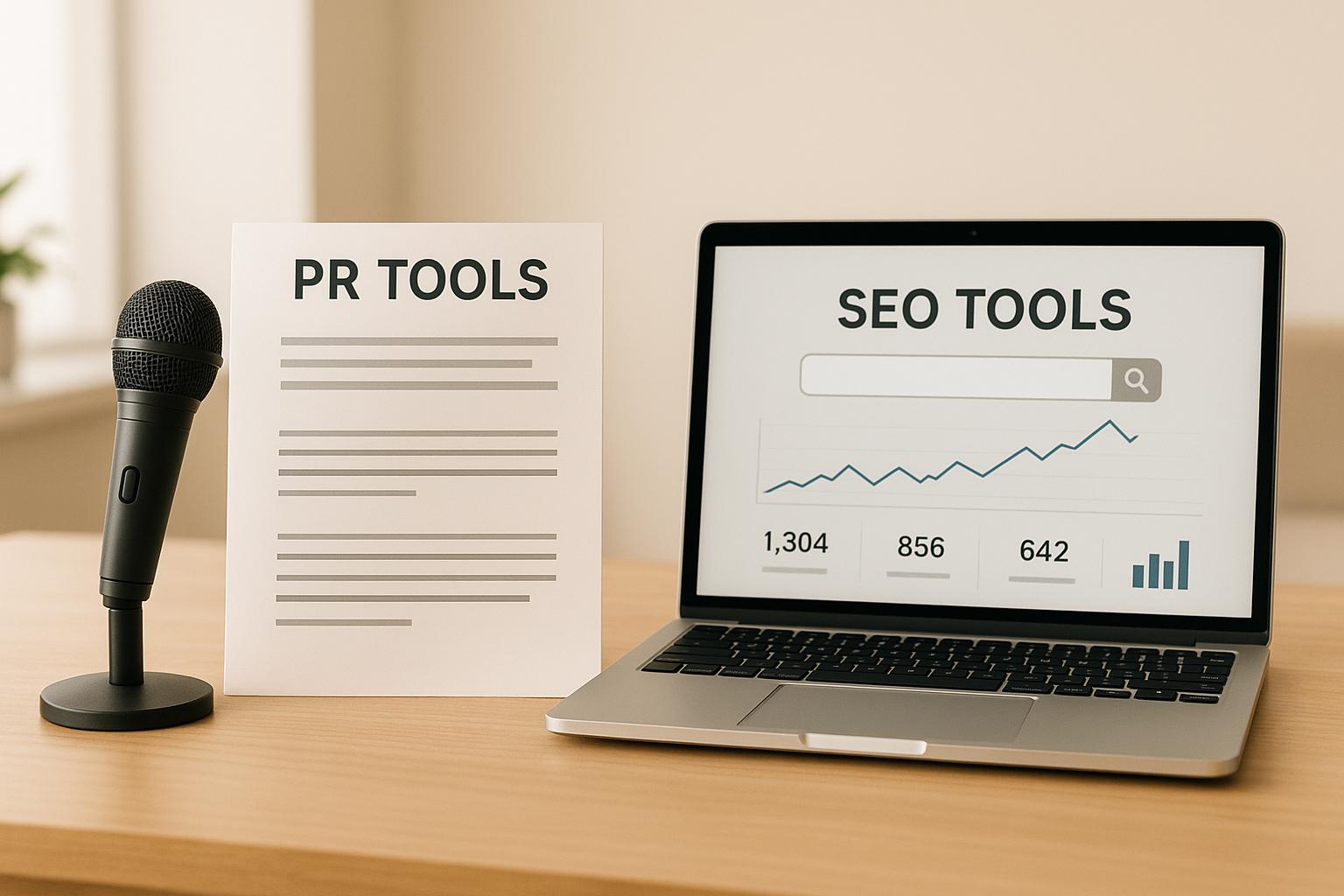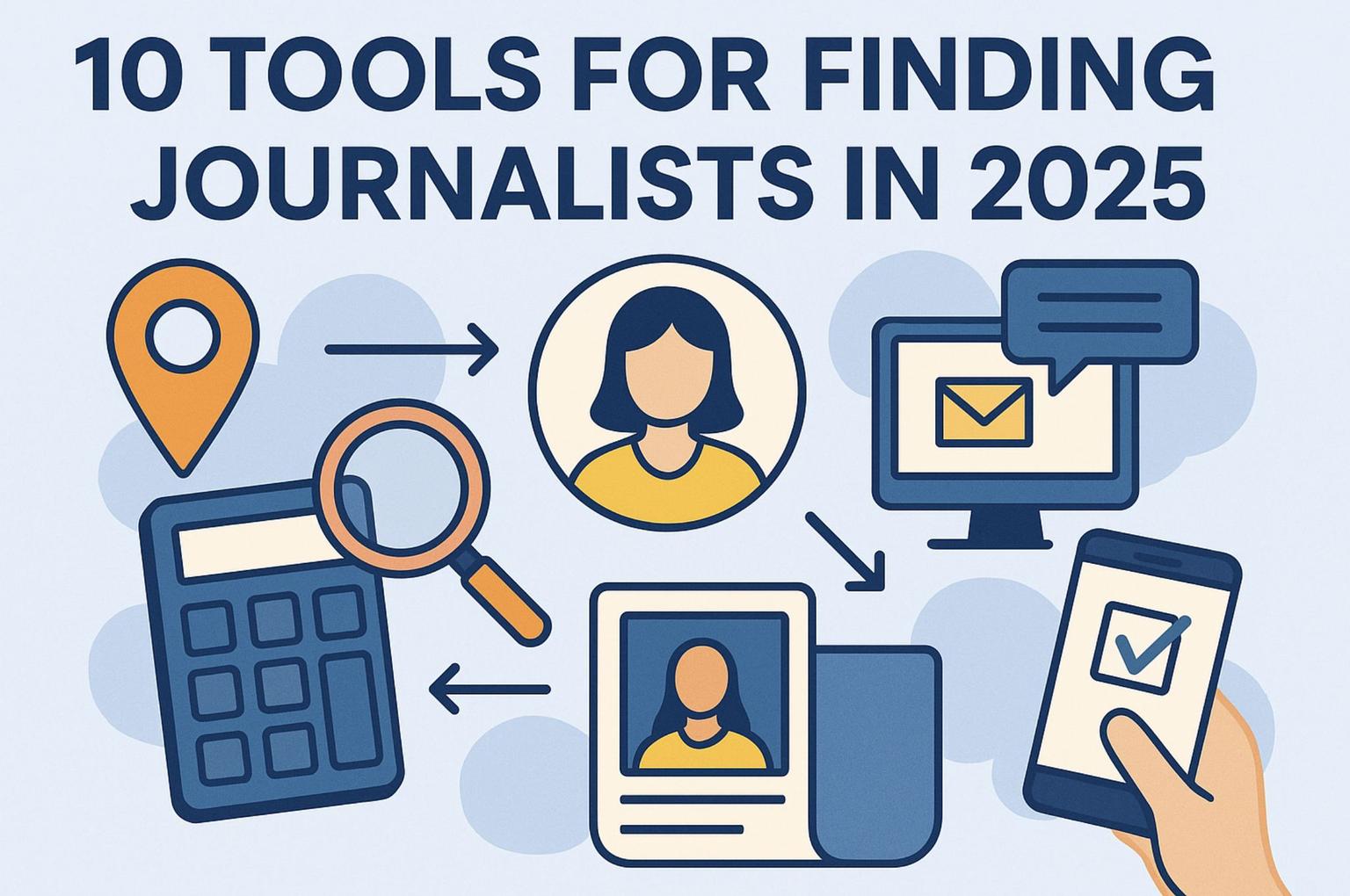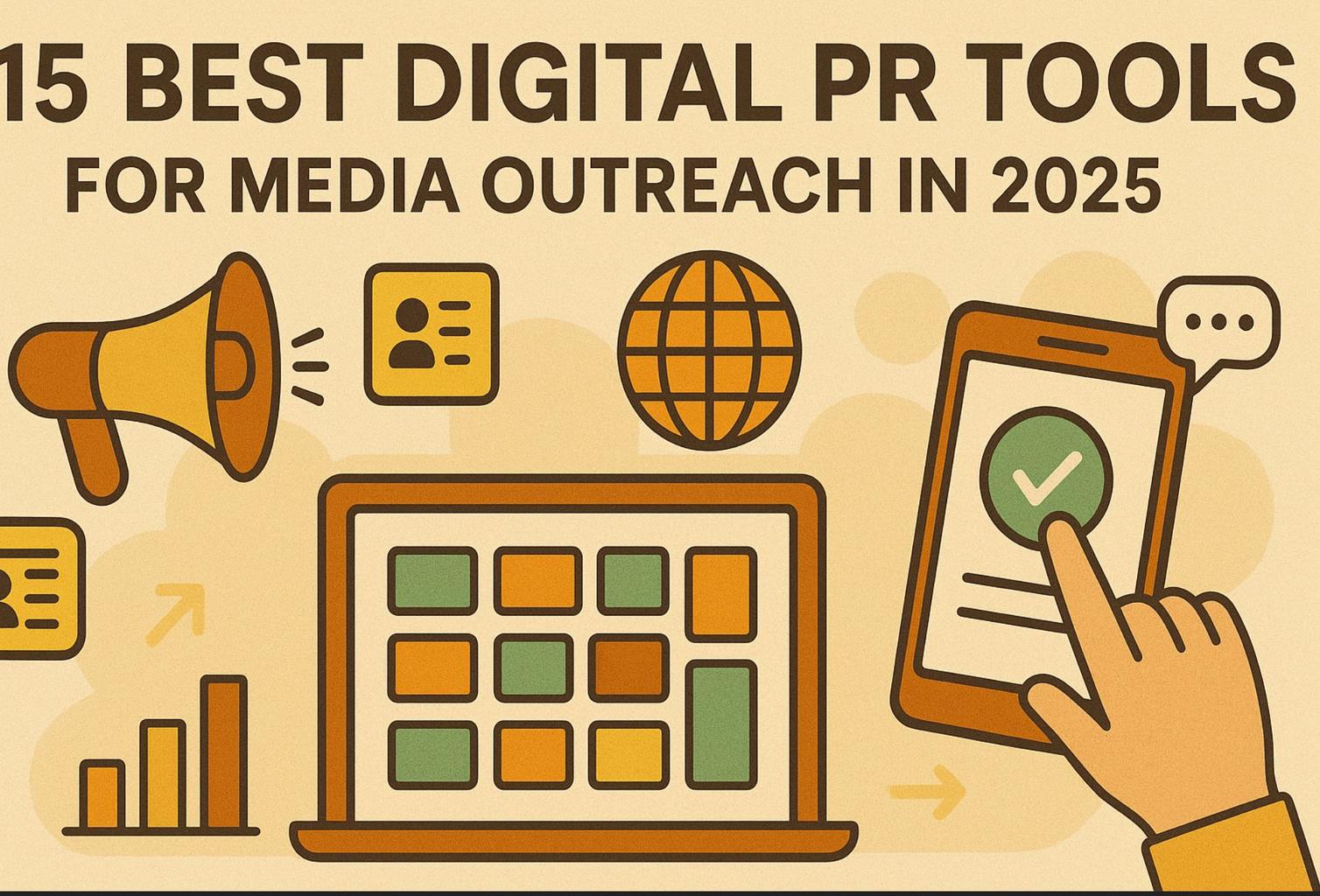Real-time media alerts are transforming public relations by enabling faster responses, smarter decisions, and more efficient workflows. These alerts notify PR teams instantly when their brand, competitors, or industry trends are mentioned across various media platforms, including social media and blogs. Here's why they're essential:
- Immediate Crisis Response: Alerts help PR teams address negative press or misinformation before it escalates.
- Opportunity Spotting: Teams can identify positive mentions or industry trends to engage with quickly.
- Efficiency: Automation reduces time spent on manual monitoring, letting teams focus on impactful tasks.
Media Alerts Demo | How Media Watcher Flags News in Seconds
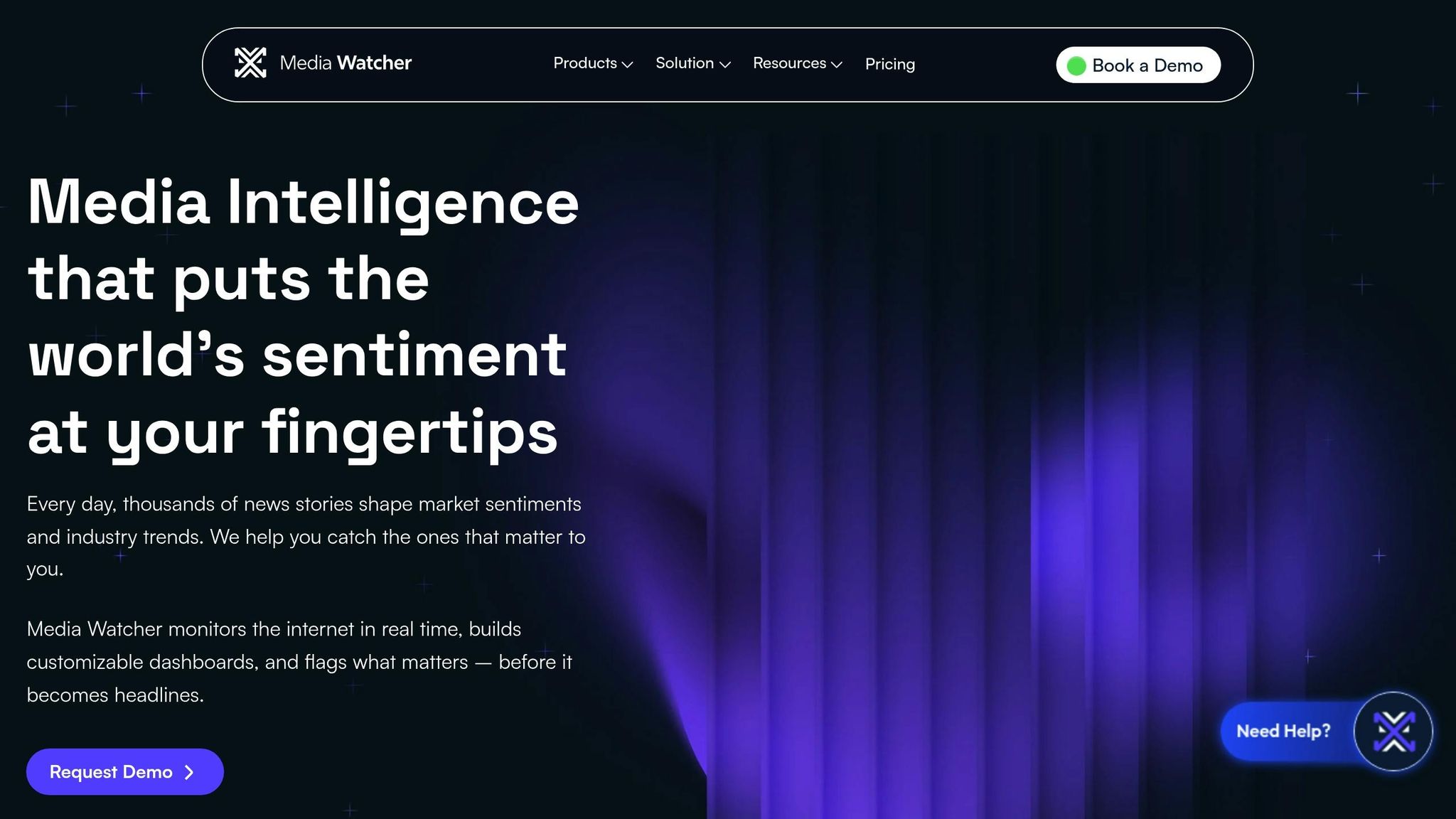
Key Benefits of Real-Time Media Alerts for PR Teams
Real-time media alerts have reshaped how PR teams operate, offering practical advantages that directly influence campaign success and brand management. These systems go beyond basic notifications, laying the groundwork for a more strategic, responsive, and efficient approach to public relations.
Faster Responses to Crises and Mentions
In PR, speed can mean the difference between containing a crisis and letting it spiral out of control. Real-time alerts act as an early warning system, giving teams the chance to respond within minutes, shaping the narrative while the story is still unfolding. This quick reaction helps prevent negative stories from gaining traction across multiple platforms.
The same principle applies to positive mentions. If a journalist quotes your company’s CEO or a customer posts a glowing review, real-time alerts ensure your team can amplify these moments while they’re still fresh. This immediate awareness allows PR professionals to engage with journalists, thank customers, or share positive coverage across their own channels before the buzz fades.
When it comes to crisis management, these alerts also help teams track how narratives evolve as stories spread. By identifying where the most damaging coverage originates, teams can craft more focused and effective responses. This ability to act quickly also ties into spotting new opportunities as they emerge.
Better Opportunity Identification
Real-time alerts aren’t just about managing crises - they’re also a powerful tool for uncovering strategic opportunities. By monitoring breaking news, emerging trends, and developing stories, these systems help PR teams identify moments where their input can make an impact.
For example, breaking industry news provides a chance for companies to position their executives as expert sources for journalists. By acting quickly, PR teams can secure media placements and build stronger relationships with key reporters.
Competitor monitoring is another advantage. Real-time alerts can notify teams when a competitor launches a product, faces challenges, or makes a major announcement. This immediate awareness allows PR professionals to adjust their messaging or capitalize on gaps in the market. Such competitive intelligence can guide decisions on product launches, campaign adjustments, or media outreach.
Social media trends also present valuable opportunities. By tracking hashtags, viral content, and emerging conversations, teams can join relevant discussions early and authentically. This proactive approach ensures brands are part of the conversation rather than trying to catch up after the fact.
More Efficiency Through Automation
One of the biggest advantages of real-time alerts is their ability to streamline workflows. Instead of spending hours manually scanning news outlets, social media, and industry publications, teams receive curated, relevant updates directly.
These alert systems go beyond simple keyword matching. Using artificial intelligence, they filter out irrelevant mentions and prioritize the most important ones based on factors like source credibility, potential reach, and sentiment. This means teams can focus their energy on acting rather than sifting through noise.
Automation also integrates seamlessly into existing workflows. Alerts can populate dashboards, create tickets in project management tools, or send notifications to the right team members - all without manual effort. This ensures critical information gets to the right people quickly.
By reducing the time spent on routine monitoring, teams can allocate their resources more effectively. Senior PR professionals can focus on strategic planning, building relationships, and developing creative campaigns, while junior team members manage routine responses. This division of labor not only improves efficiency but also enhances team performance.
Additionally, automation can lead to cost savings. Many teams find they can reduce their reliance on expensive clipping services or external monitoring agencies. These savings can then be redirected toward more impactful PR activities, such as hosting media events, creating content, or building influencer partnerships.
How to Set Up and Optimize Real-Time Media Alerts
Setting up effective real-time media alerts requires a mix of careful planning and smart customization. The process starts with selecting the right keywords and configuring alerts to fit your monitoring goals.
Choosing the Right Keywords and Channels
Start by defining your goals - whether it's managing crises, generating leads, or tracking your reputation. These objectives will guide your choice of keywords. At a minimum, monitor your brand name, product names, key personnel, and industry-related terms. Don’t forget to include common misspellings or abbreviations that people might use. For instance, if your company is called "TechnoSolutions", you might also track variations like "Techno Solutions", "TechSolutions", or even "TechnoSols."
Using Boolean operators can refine your search. Combine terms with "AND", include variations with "OR", and exclude irrelevant mentions with "NOT." For better organization, create separate searches for different topics to make analyzing data easier.
Long-tail keywords are especially useful for tracking specific conversations. For example, instead of just monitoring "coffee", a café could track phrases like "best coffee downtown", "organic coffee beans", or "coffee shop with WiFi." These longer phrases might yield fewer alerts, but they’re often more relevant and actionable.
When it comes to choosing channels, think broadly. Keep an eye on traditional media like newspapers, magazines, TV, and radio, as well as digital sources such as online news sites, blogs, social media, forums, and podcasts. Niche publications and local newspapers can also provide valuable insights, especially if they cater to your industry or geographic area.
For social media, focus on platforms where your audience is most active. However, don’t ignore emerging networks. Track hashtags, brand mentions, and sentiment on platforms like Reddit, LinkedIn, Facebook, Instagram, and Twitter. You can also use geographic filters to zero in on mentions from specific regions and set language preferences to monitor conversations in relevant languages.
"Muck Rack's alerts are so much more effective than even Google Alerts. They come in faster, and they're more targeted because you can use so many different keywords." - Caroline McKay, founder of Caro
Once you’ve nailed down your keywords and channels, adjust the frequency and delivery of alerts to suit your needs.
Customizing Alert Frequency and Delivery
The frequency of alerts should align with the urgency of the information you’re tracking. Real-time alerts are crucial for time-sensitive situations like customer complaints, crises, or breaking news, where a quick response can make a big difference. But too many notifications can lead to alert fatigue, so balance is key.
For less urgent needs - like monitoring general sentiment, competitor activity, or industry trends - daily or weekly summaries are more practical. This allows your team to review updates at a convenient time without constant interruptions.
How you deliver alerts also matters. Email works well for summaries and non-urgent updates, while SMS or push notifications are better for situations requiring immediate action. Many teams use a tiered system: critical alerts go to key decision-makers via SMS, important mentions are emailed to the PR team, and general updates are shared as weekly summaries through a dashboard.
You can also categorize alerts by priority. For example:
- Crisis-level mentions trigger immediate notifications.
- High-priority mentions generate same-day alerts.
- Routine updates are compiled into periodic reports.
This approach ensures urgent issues get immediate attention while less critical information is handled during regular business hours.
Using Tools to Centralize and Streamline Alerts
Once your alerts are set up, streamline your workflow by consolidating notifications with integrated tools. Centralizing everything on one dashboard helps your team stay organized and focused. Look for platforms that offer features like automated filtering, project management integration, and customizable reporting to ensure the right people see the right alerts.
Advanced tools that use artificial intelligence can help filter out noise, scoring alerts based on factors like source credibility, reach, and sentiment. This saves your team from wasting time on irrelevant mentions, allowing them to focus on actionable insights.
When comparing monitoring tools, resources like AllDigitalPR Directory can be helpful. They provide detailed comparisons of media monitoring platforms, including features, pricing, and integration options, so you can find a solution that fits your needs and budget.
Customizable reporting features are another must-have. While real-time alerts handle immediate issues, regular reports help track patterns, measure campaign success, and show ROI to stakeholders. Automated weekly or monthly summaries save time and ensure consistent communication with leadership.
As your team grows, centralized user management becomes increasingly important. Choose platforms that let you set different permission levels, customize alerts for individual team members, and maintain consistent monitoring settings across the organization. This way, everyone gets the information they need without overwhelming junior staff with alerts meant for senior leaders.
sbb-itb-3230277
Practical Applications of Real-Time Alerts in PR Strategies
Real-time alerts have become a game-changer for PR teams, offering tools that enhance everything from crisis response to fine-tuning campaigns. In today’s fast-moving media world, these alerts help organizations stay ahead of issues and protect their reputation.
Crisis Management
Think of real-time alerts as a company’s early warning system. They provide quick detection of incidents and offer essential data, allowing teams to act swiftly and monitor how audiences are reacting. This is crucial when you consider the stakes: small businesses can face six-figure losses from bad PR, while larger corporations might suffer billion-dollar hits. And here’s the kicker - two-thirds of consumers say they’re unlikely to shop with a company after a poorly handled crisis. Yet, less than half of organizations have a formal crisis plan, and 23% don’t have one at all.
Data-Driven Campaign Adjustments
Real-time alerts don’t just help in emergencies - they’re also invaluable for improving ongoing campaigns. By delivering detailed insights and offering comparisons to similar past events, these alerts enable teams to make informed, strategic decisions. Combining AI with human analysis, they help identify emerging trends and track key narratives, ensuring PR teams can adapt quickly to changes in public perception or seize new opportunities as they arise.
Reputation Tracking and Sentiment Analysis
Beyond crisis management and campaign tweaks, real-time alerts play a critical role in safeguarding a brand’s reputation. They allow PR teams to monitor public sentiment continuously, catching potential issues before they spiral out of control. With advanced AI tools, teams can analyze sentiment shifts and respond to negative narratives effectively. Additionally, these alerts provide leaders with up-to-the-minute insights on relevant media coverage and potential pressure points, enabling proactive steps to avoid crises altogether.
Evaluating Tools for Real-Time Media Alerts
Choosing the right media monitoring tool can make all the difference in PR efforts. With so many options out there, knowing which features matter most can save you time and ensure you get the best return on your investment.
Key Features to Look For in Media Monitoring Tools
Wide-ranging coverage is a must-have. The most effective tools track mentions across a variety of platforms - traditional media, social media, blogs, forums, podcasts, and even broadcast channels. Without this level of reach, you risk missing important conversations.
Real-time alerts are equally crucial. Opt for tools that notify you within minutes. Delays, even short ones, can make crisis management much harder.
Advanced filtering options can help cut through the noise. The ability to filter alerts by sentiment, language, location, or source authority keeps your focus on what truly matters.
For sentiment analysis, many tools use AI to assess tone but also incorporate human oversight to pick up on subtleties like sarcasm or context.
Customizable dashboards and reporting are invaluable for managing workflows. Tools that offer tailored reports, long-term tracking, and flexible export options simplify the reporting process.
System integration is another game-changer. Tools that seamlessly connect with your CRM, social media platforms, and analytics systems can cut down on manual work and help your team respond faster - keeping up with the fast-paced nature of PR.
Simplifying Your Search with AllDigitalPR Directory
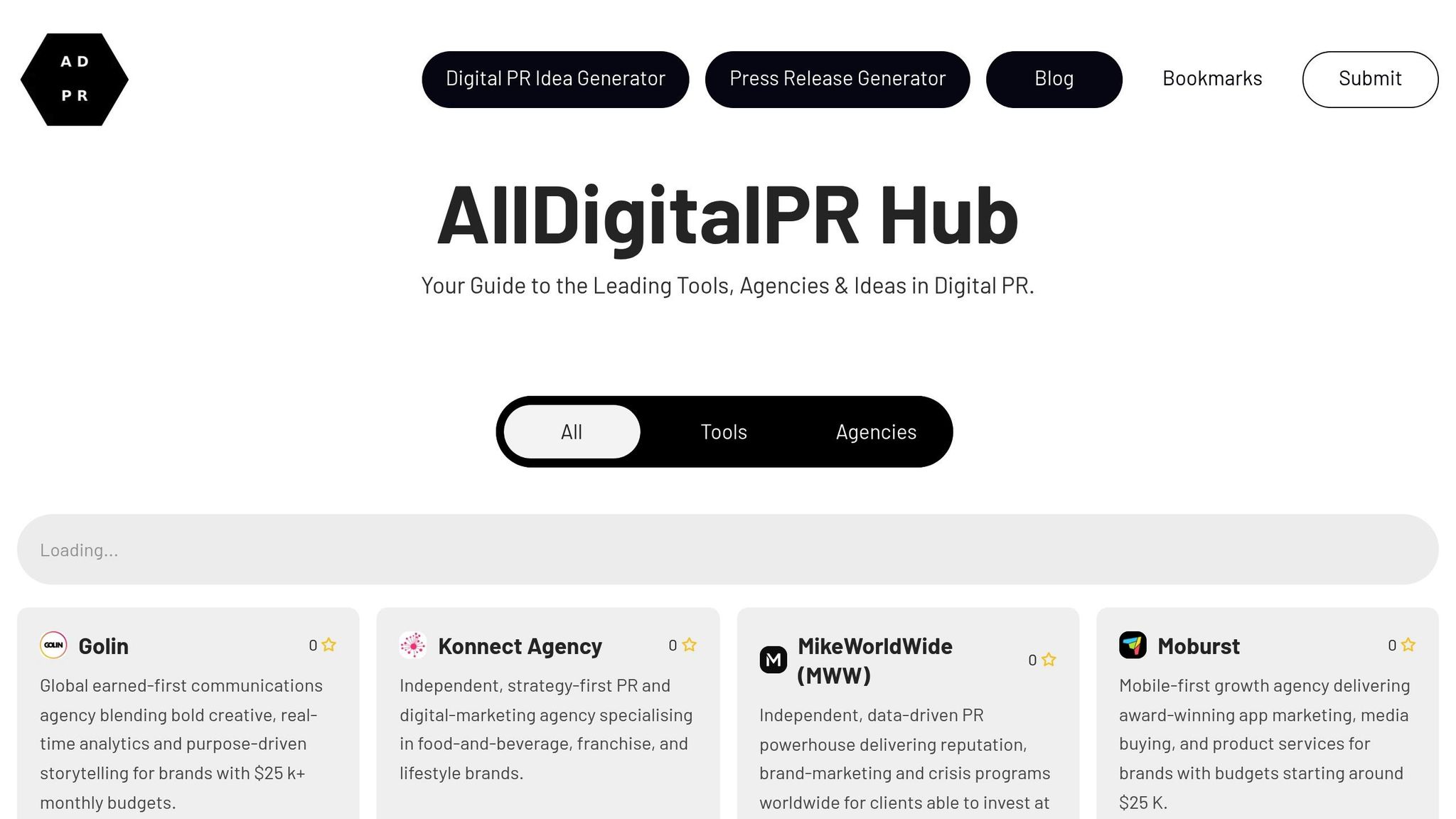
Once you've identified the features you need, the next step is comparing tools effectively. The AllDigitalPR Directory is a handy online resource that lists and compares digital PR solutions, including media monitoring and analytics tools. It’s a one-stop shop for researching different platforms, letting you explore their features side by side. By using this directory, you can zero in on tools that meet your specific needs for real-time alerts and comprehensive coverage, helping you make smarter decisions for your PR strategy.
Conclusion: The Impact of Real-Time Media Alerts on PR Success
Real-time media alerts are transforming public relations by providing instant insights that improve speed, precision, and decision-making.
One of the biggest advantages is the ability to act quickly and accurately. Traditional, manual media monitoring is not only slow but also prone to mistakes, which can hinder the success of PR campaigns. Automated systems solve these issues, allowing PR teams to respond to crises and opportunities without delay.
These alerts also support smarter, data-driven decisions. Teams can tweak messaging and refine audience targeting based on live feedback, leading to more effective campaigns. This kind of real-time data doesn’t just guide strategy - it also boosts efficiency by automating repetitive tasks. With less time spent on manual monitoring, PR professionals can focus on relationship-building and planning creative campaigns.
For those considering real-time monitoring tools, selecting the right platform is key. Tools like CisionOne, Agility, Propel, and Roxhill offer various features and pricing structures. While having options is a plus, it can make finding the perfect fit a bit overwhelming.
That’s where AllDigitalPR Directory comes in. This platform simplifies the process by letting PR teams compare monitoring and analytics tools side by side. Instead of spending weeks researching, teams can quickly find solutions tailored to their needs - whether it’s real-time alerts, broader media coverage, or seamless integrations.
Investing in real-time alerts leads to faster crisis management, better opportunity spotting, and more agile campaigns. With resources like AllDigitalPR Directory, PR teams can easily identify the tools that will help them succeed.
FAQs
How can PR teams set up real-time media alerts to stay updated with the most relevant news?
To create effective real-time media alerts, PR teams should first establish clear goals and pinpoint the keywords, topics, outlets, and journalists most relevant to their objectives. This approach ensures that the alerts are focused and aligned with their needs.
By leveraging tools with customization options, teams can set up alerts for mentions, hashtags, sentiment shifts, or specific sources. It's smart to prioritize notifications for critical updates, allowing for quick responses to significant developments. Regularly revisiting and fine-tuning alert settings helps keep the system accurate and relevant as priorities evolve.
How can real-time media alerts help companies manage crises or take advantage of opportunities?
Real-time media alerts give companies an edge when it matters most. They provide instant notifications about negative mentions or shifts in public sentiment, enabling PR teams to respond swiftly and protect the company's reputation. For instance, businesses can use these alerts to tackle misinformation before it gains traction, helping them maintain control over how they're perceived.
But their value doesn’t stop at crisis management. These alerts are also a goldmine for spotting engagement opportunities. By monitoring trending topics or emerging conversations, businesses can create timely responses or content that strikes a chord with their audience. This approach allows PR teams to transform potential hurdles into chances for positive exposure and meaningful connections with their target market.
How do real-time media alerts work with PR tools to improve efficiency and results?
Real-time media alerts work hand-in-hand with PR tools to provide instant updates whenever your brand or campaign gets mentioned in the media. This means teams can respond quickly - whether it’s seizing a new opportunity or addressing a potential problem - without missing a beat.
These alerts also take the hassle out of manual tasks. They automate processes like generating reports and tracking campaign performance, saving valuable time. By delivering actionable insights as events unfold, they empower PR teams to make smarter, data-informed decisions, helping to sharpen and improve their strategies.
